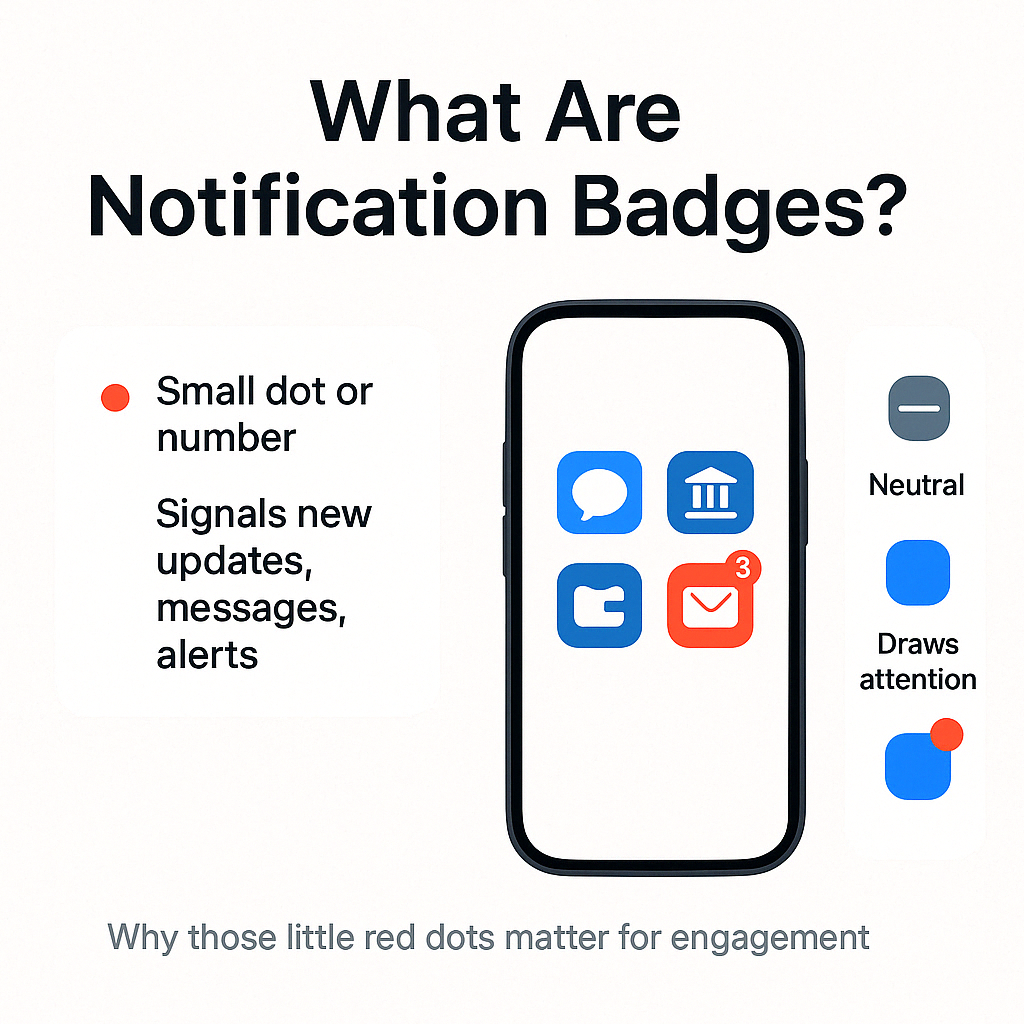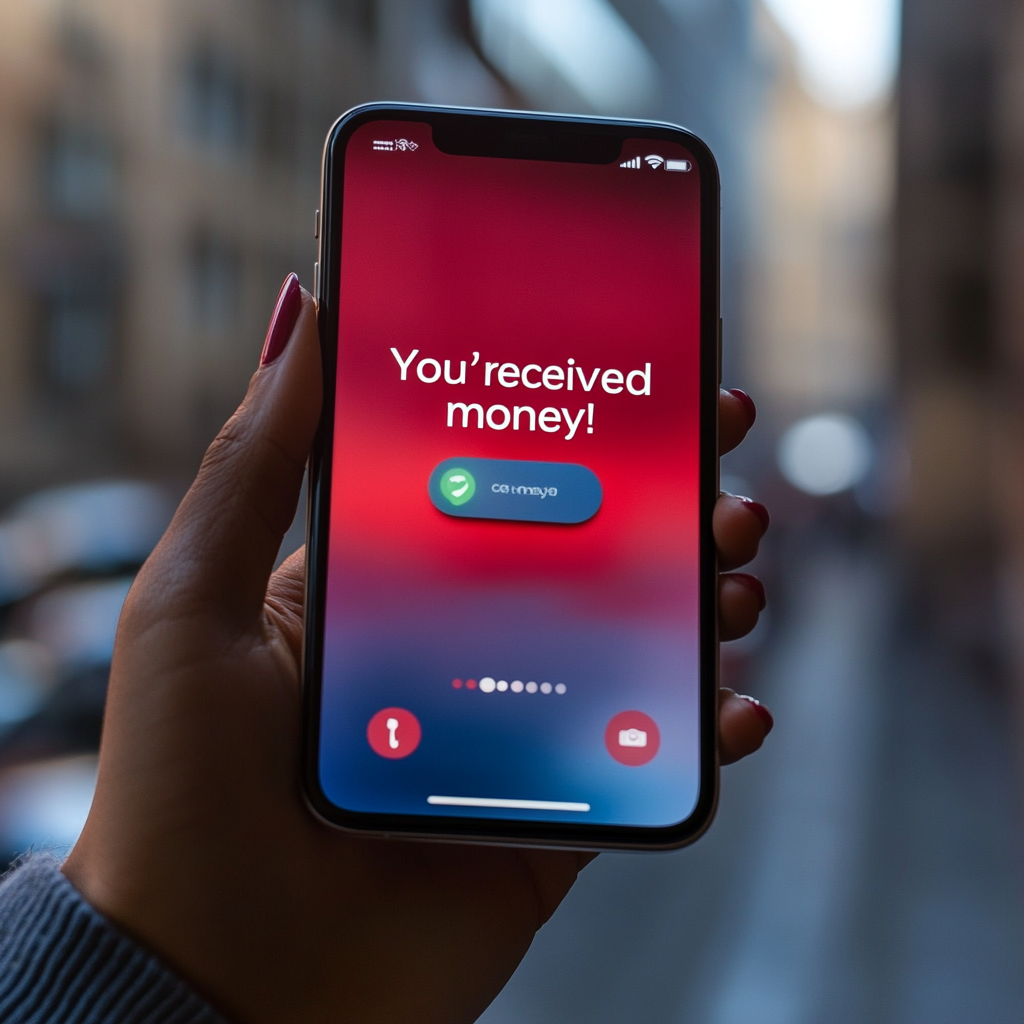Notification badges — those tiny red circles or dots you see on app icons — are much more than a visual design choice. They serve as subtle yet powerful indicators that something inside the app needs your attention.
Whether it’s an unread message, a missed update, or a pending task, these symbols play a central role in how we interact with mobile and web apps. In this article, we’ll break down what notification badges are, how they differ across platforms like Android and iOS, their psychological impact on user behavior, and how they’re implemented in both native apps and web-based environments.
What Is a Badge Notification?
A badge notification, also called an app icon badge, is a small visual cue displayed on or near an app’s icon. Most commonly seen as a red circle with a number inside, the badge lets users know that new activity has occurred in the app — even if they missed or ignored other alerts.
Examples of what badges may indicate:
- Unread messages in messaging apps (e.g., WhatsApp, iMessage)
- Pending updates or tasks (e.g., to-do apps, email apps)
- Notifications from social media (e.g., likes, comments, or mentions)
Badges don’t interrupt you like banners or pop-up alerts. Instead, they sit quietly on the home screen or app drawer, providing a persistent reminder to open the app. This makes them highly effective for increasing engagement and return visits.
Why Are App Icon Badges Important?
Badges may look simple, but they have a significant psychological effect on how users interact with apps. Here’s why they’re valuable:
1. Increase User Engagement
Badges create a visual signal that encourages users to open the app and interact. For example, a badge showing “5” on a messaging app suggests unread chats — prompting the user to check them.
2. Act as a Reminder
If a user misses or swipes away a push notification, the badge remains as a backup reminder that there’s still something pending.
3. Trigger Curiosity or FOMO
Humans are naturally curious — seeing a red dot or a number triggers the desire to know what’s inside. This sense of anticipation boosts click-through and open rates.
4. Support Retention
Apps that consistently remind users of pending actions through badges tend to see higher retention rates. This is especially true for apps offering ongoing updates, such as email clients, social networks, or productivity tools.
How Notification Badges Work on Android vs. iOS
Both Android and iOS support notification badges, but they handle them in different ways.
Android Notification Badges
- On Android, badges appear when there are active notifications in the notification center.
- Once the notification is cleared, the badge disappears.
- Android badges can be configured to show:
- A simple dot
- An exact number
- Or nothing at all, depending on user settings and developer choices
- A simple dot
Developers can control badge behavior through notification channels, allowing per-category customization. Users can also manually disable badges for any app.
iOS Notification Badges
- iOS badges are generally persistent.
- They remain on the icon until:
- The user opens the app and clears the pending items, or
- The app removes the badge programmatically
- The user opens the app and clears the pending items, or
- iOS shows badges as red circles with numbers, typically located in the upper-right corner of the app icon
Because iOS badges don’t disappear automatically, they serve as a stronger engagement tool — especially when users delay interacting with push notifications.
Can Web Apps Use Notification Badges?
Although web apps don’t natively support icon badges on the mobile home screen like native apps do, modern Progressive Web Apps (PWAs) can simulate similar functionality — especially on Android.
Examples of badge behavior on the web:
- PWAs installed via Chrome on Android can show badges on home screen icons using the badge property in the Web App Manifest.
- Service workers can trigger badge-style notifications by keeping persistent alerts visible until the user takes action.
This allows websites to mimic mobile app behavior and nudge users back, even without sending a new push.
Best Practices for Using Badges
If you’re designing an app or managing notifications, here’s how to use badges effectively:
- Keep them relevant: Don’t display badges for insignificant changes. Only show them when action is truly required.
- Avoid overuse: Constant badge presence can lead to “badge blindness” or annoyance.
- Update in real time: If an action is completed, clear the badge to avoid confusion.
- Respect user settings: Allow users to disable badges or modify how they’re displayed.
- Use numbers meaningfully: A badge showing “99+” is less effective than one showing the exact number of new items.
Final Thoughts
Notification badges may be small, but their impact on user behavior is significant. They serve as subtle, persistent prompts that drive app re-openings, reduce missed updates, and increase overall engagement.
Whether you’re a casual user wondering why there’s always a red dot on your screen, or a developer aiming to improve retention, understanding how app icon badges work — and how to use them wisely — is a valuable step in building a smarter digital experience.
FAQ: Notification Badges Explained
What is the difference between a badge and a push notification?
A push notification actively alerts the user through a message pop-up or alert, while a badge is a passive visual reminder on the app icon.
Can I turn off app icon badges?
Yes. Both Android and iOS allow users to disable badge notifications for individual apps in system settings.
Why does the badge show a number even after I checked the app?
Some apps require users to interact with specific content (like reading all messages) before clearing the badge. Others rely on developers to manually reset the badge count.
Do all apps support badges?
Most apps do, but implementation depends on the developer and the platform. Some may choose not to show badges at all.






